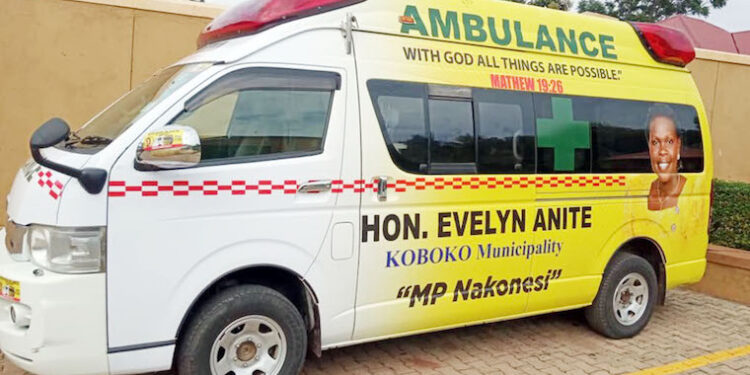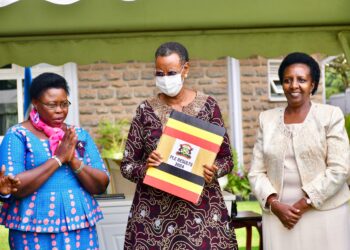All ambulances that are categorized as Type A will soon be banned from carrying patients; this is according to the Minister of Health Minister Dr. Jane Ruth Aceng.
Aceng who was speaking at a function to receive a donation of three ambulances from Enabel, the Belgian Development Agency on Tuesday, said once the Emergency Services Policy that was recently passed by cabinet comes into force they will only allow ambulances starting with Type B as the basic required vehicle to offer ambulance services.
Politicians especially Members of Parliaments have been donating ambulances as one of the ways to attract supporters. A Type B ambulance should be fitted with equipment to offer oxygen therapy, nebulization, monitoring of vital parameters and automatic external defibrillation for diagnosing life threatening heart beating.
Currently, Type A ambulances are considered transport vehicles that cannot offer any medical care to injured persons. The new basic acceptable Type B ambulance that is being mooted by the Ministry costs not less than 200 Million Shillings.
According to Tom Vanneste, the Enabel in Uganda Resident Representative, the donated ambulances to Amuru, Omoro and Nwoya districts fit the new requirements by the ministry and that their equipping and upgrade were done in Uganda.
The three ambulances that cost 780 Million Shillings are expected to transport acutely ill and injured patients both from the community and lower health facilities to referral centers.
Vanneste says they zeroed on the Acholi sub-region after their assessment found a few functional ambulances in the area and yet the available ones were not properly equipped to support life, something that often led to stories of pregnant mothers and children dying in transit.
Aceng cautioned the district leaders against using the ambulances to transport food, bodies or even officials to meetings. She said while they have been donated specifically to the districts of Omoro, the vehicles will be stationed at Gulu Regional Referral hospital to allow for easy coordination.
She explained that as per the new guidelines, they are setting up regional coordination systems which allow the vehicles to be regionally serviced and run to ensure efficiency as they are also setting a call and dispatch center.
Dr. John Bosco Wanaiye, who heads the Emergency Services Division in the ministry says that government plans to procure 500 type B ambulances that will be circulated equitably across the country.
In addition, they will procure 20 Type C ambulances, five boat ambulances and aero medical services that will be running by the Police and Army. Type C ambulances are those where a patient will be able to get advanced life support aboard including a minor lifesaving surgery.
Currently, there’s only one Type C ambulance in the whole country being managed by the Uganda Heart Institute.
Do you have a story in your community or an opinion to share with us: Email us at editorial@watchdoguganda.com













